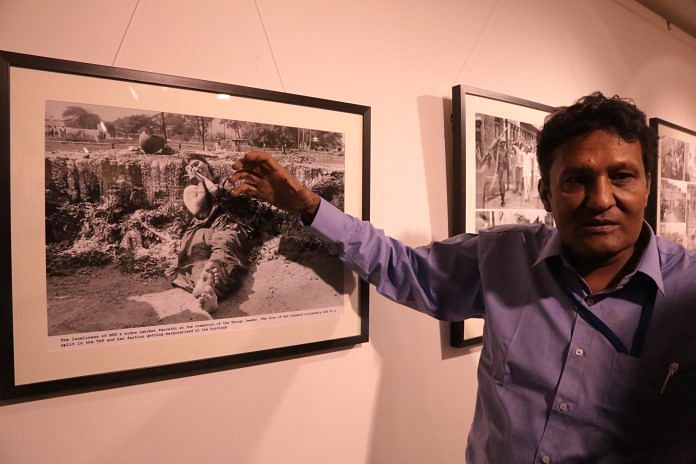The exhibition, titled ‘200 & One’, traces photojournalist Praveen Jain’s 34-year journey from the 1984 riots to the rise of Narendra Modi as PM.
New Delhi: A significant, and often overlooked, occupational hazard of being one of the foremost political photojournalists in the country is that you have ‘seen’ too much.
From the 1984 anti-Sikh riots to the Hashimpura massacre; from the aftermath of Rajiv Gandhi’s assassination to the demolition of the Babri Masjid; from the Kargil War to the rise of Narendra Modi to Prime Minister, Praveen Jain has seen it all — and recorded it in his camera for posterity.
Beginning 2 November, Jain’s work is being exhibited under the title ‘200 & One’ at the All India Fine Arts & Crafts Society (AIFACS) gallery in the capital.
The exhibition began shortly after the Delhi High Court verdict sentencing 16 former Provincial Armed Constabulary (PAC) officers to life imprisonment for the Hashimpura massacre. Jain’s photographs of the incident were provided as evidence in court, and Jain, 22 years old at the time, was a key witness.
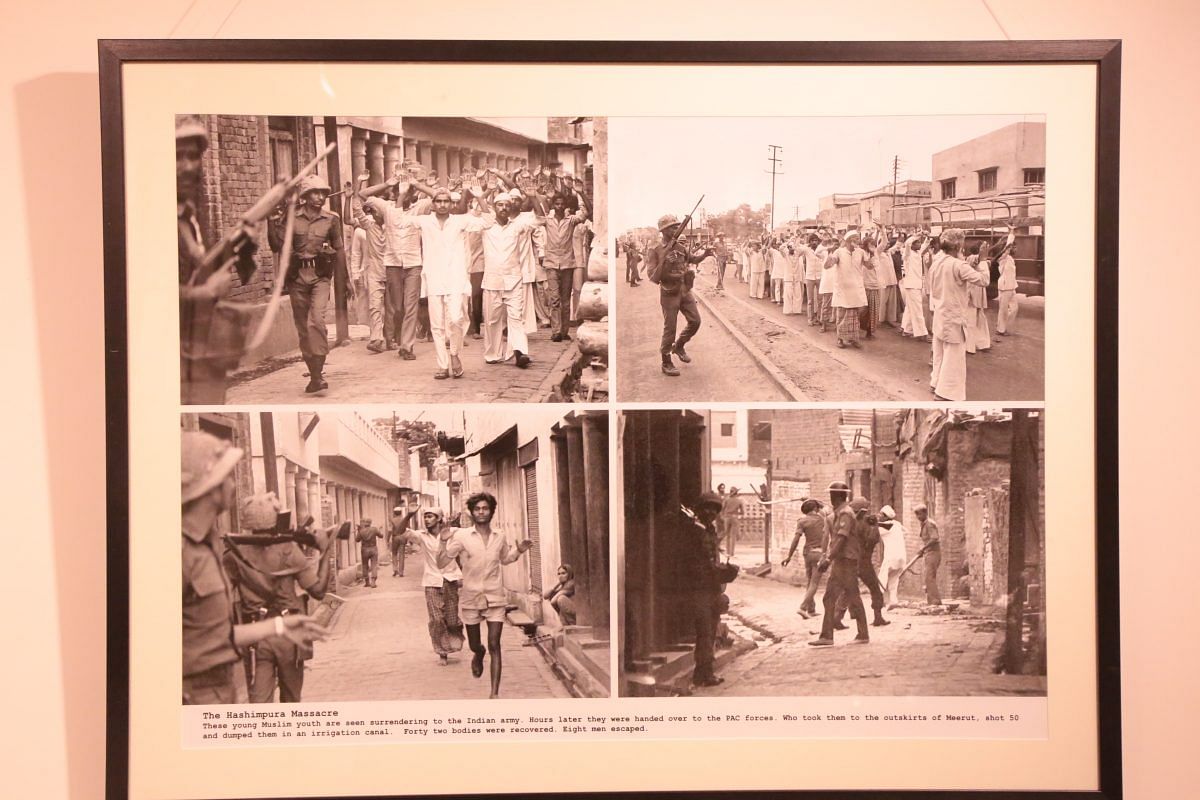
“These are the only pictures before their death. The army handed them over to the PAC, and they killed them. This is the only evidence that proves that such a thing happened,” Jain told ThePrint.
“I was very scared; I was hiding when I took these. If the UP police said they killed 42, then what was a 43rd ‘encounter’?”
Also read: Hashimpura verdict exposes India’s criminal justice system
Babri eyewitness
Jain is also a key witness in the Babri Masjid demolition case, and continues to testify in the Lucknow trial court.
“Everyone was there on 6 December 1992, but I was the only one there the day before — when the rehearsals took place,” Jain said.
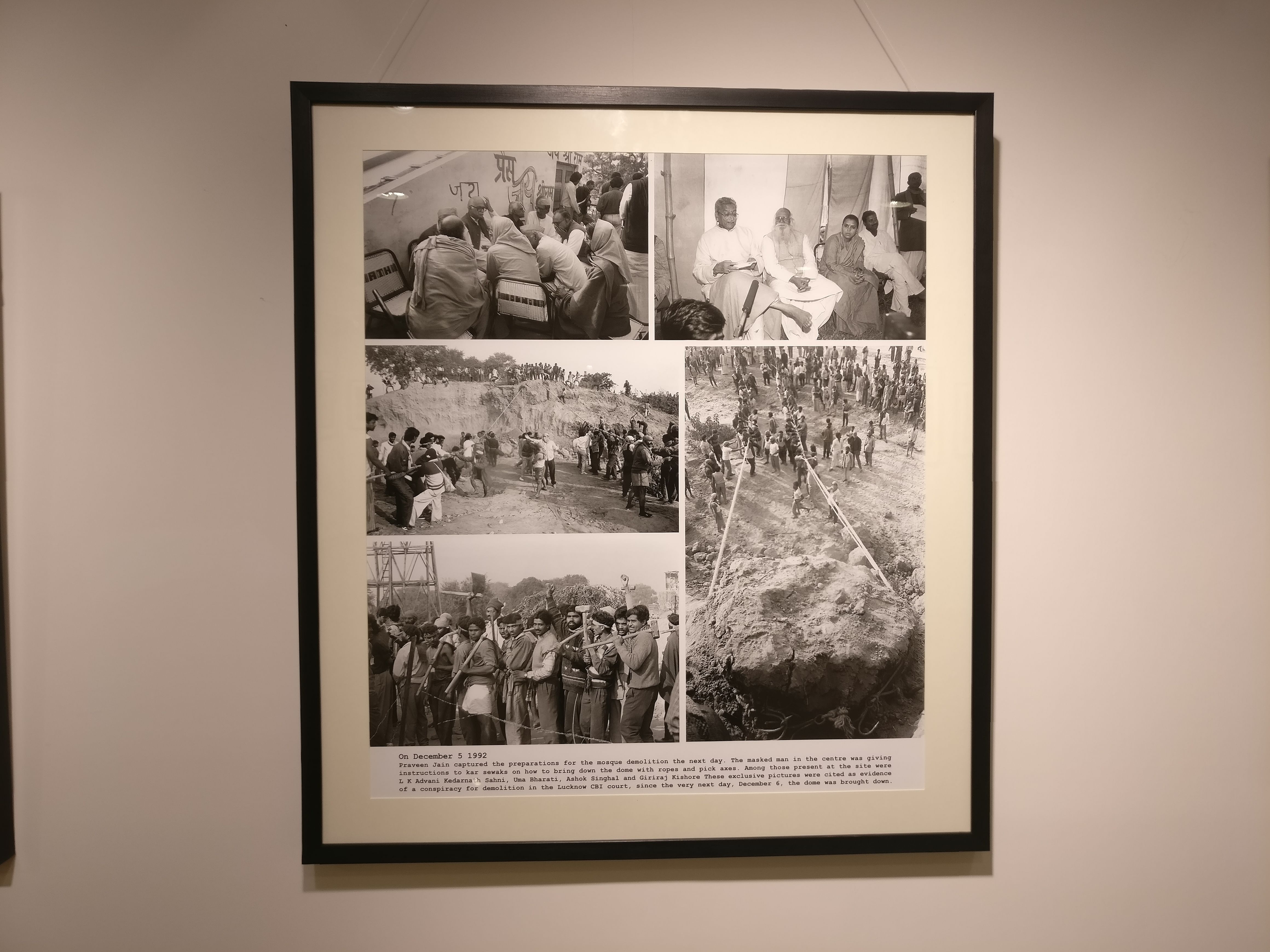
In order to gain access to grounds where the drills were taking place, Jain had to disguise himself as a member of the Vishwa Hindu Parishad.
“The BJP and RSS insist that the Babri demolition happened ‘suddenly’, but my pictures show that everything was planned. The same method was used in practice on 5 December — with ropes to climb and pull down the dome,” he said.
Visual stenographer of history
Standing in front of stark white walls surrounded by 201 of his most significant photographs, Jain still manages to cut an unassuming figure, speaking matter-of-factly about his role as history’s visual stenographer.
“At that time, no Hindu could enter the Golden Temple out of fear of (Jarnail Singh) Bhindranwale. But he called me through one of his aides. He said, ‘Ask that Delhi journalist to document this’,” Jain recalled.
“Subramanian Swamy was meeting him to apologise for the statement he made in Parliament after Bhindranwale put him on his death-list. He was very afraid.
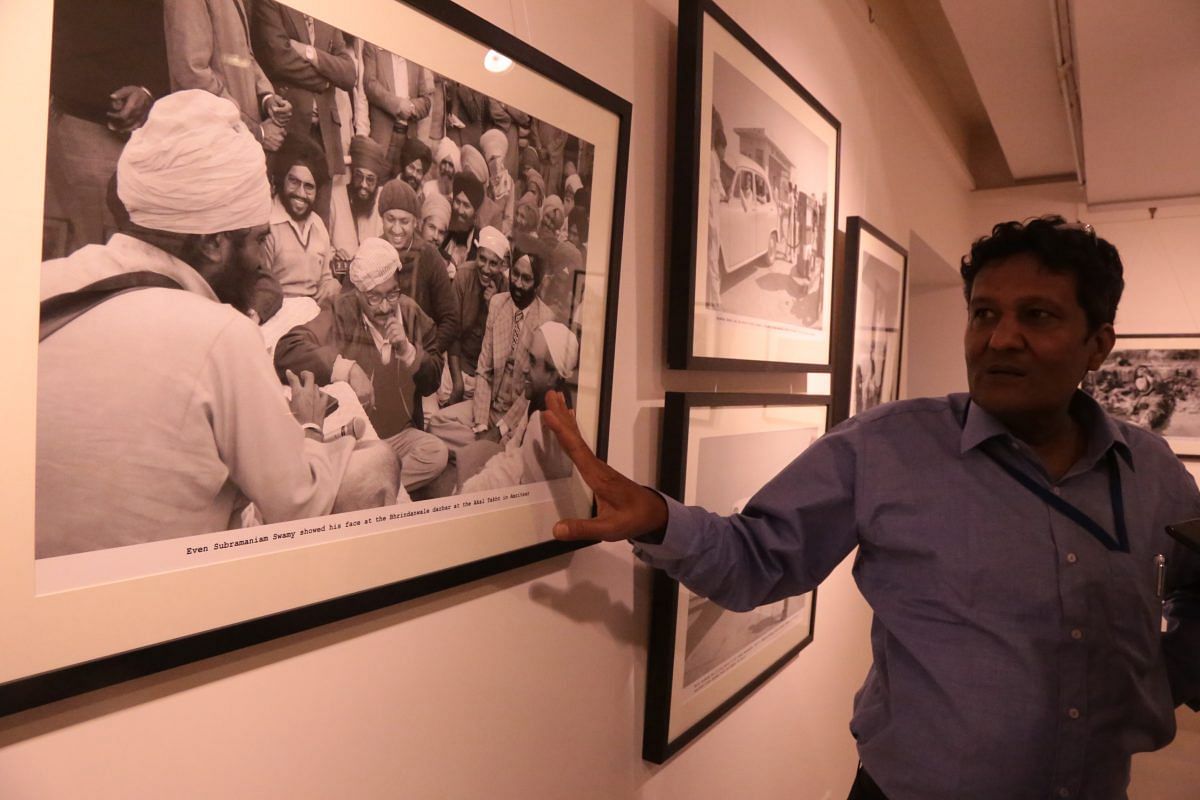
“But you can’t prove it — that he was apologising.”
Also read: On his death anniversary, remembering the most interesting man I’ve met: Bhindranwale
At noon, former PM Manmohan Singh enters the gallery — protected from onlookers and lurking reporters by a wall of security guards. Cameras flash and spectators vie for an opportunity at a photo-op.
Framed on the walls, however, Singh stands alone.
In a majority of the photographs featuring him, Singh is the singular subject — his isolation captured perfectly in Jain’s caption: “Ekla chalo: No one even noticed Manmohan Singh’s presence at the Indira Gandhi samadhi before he took over as prime minister.”
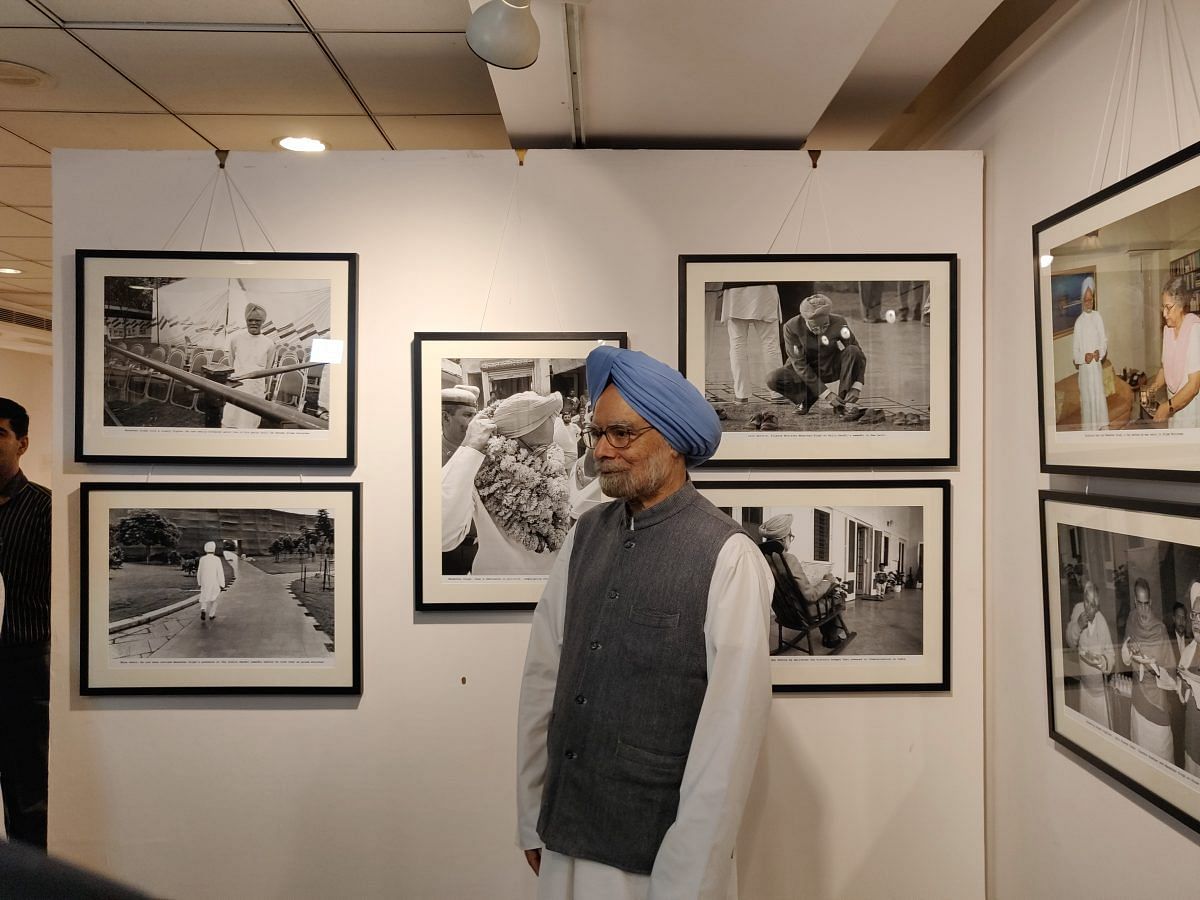
On prime ministers
Even though the showcase covers 10 Prime Ministers, eight Presidents and innumerable chief ministers, Rajiv Gandhi remains Jain’s favourite subject till date. More than his charm and grace, Jain said he respected the care with which he treated the media and staff.
“I was travelling with him to Kanchipuram, Madras, and I was with him the whole day. They were eating a traditional lunch on the floor, and nobody was offering me food, because Rajiv Gandhi was the priority. But he made me sit next to him, and made sure I ate, even after I said I wasn’t hungry,” Jain said. “Politicians these days aren’t like that.”
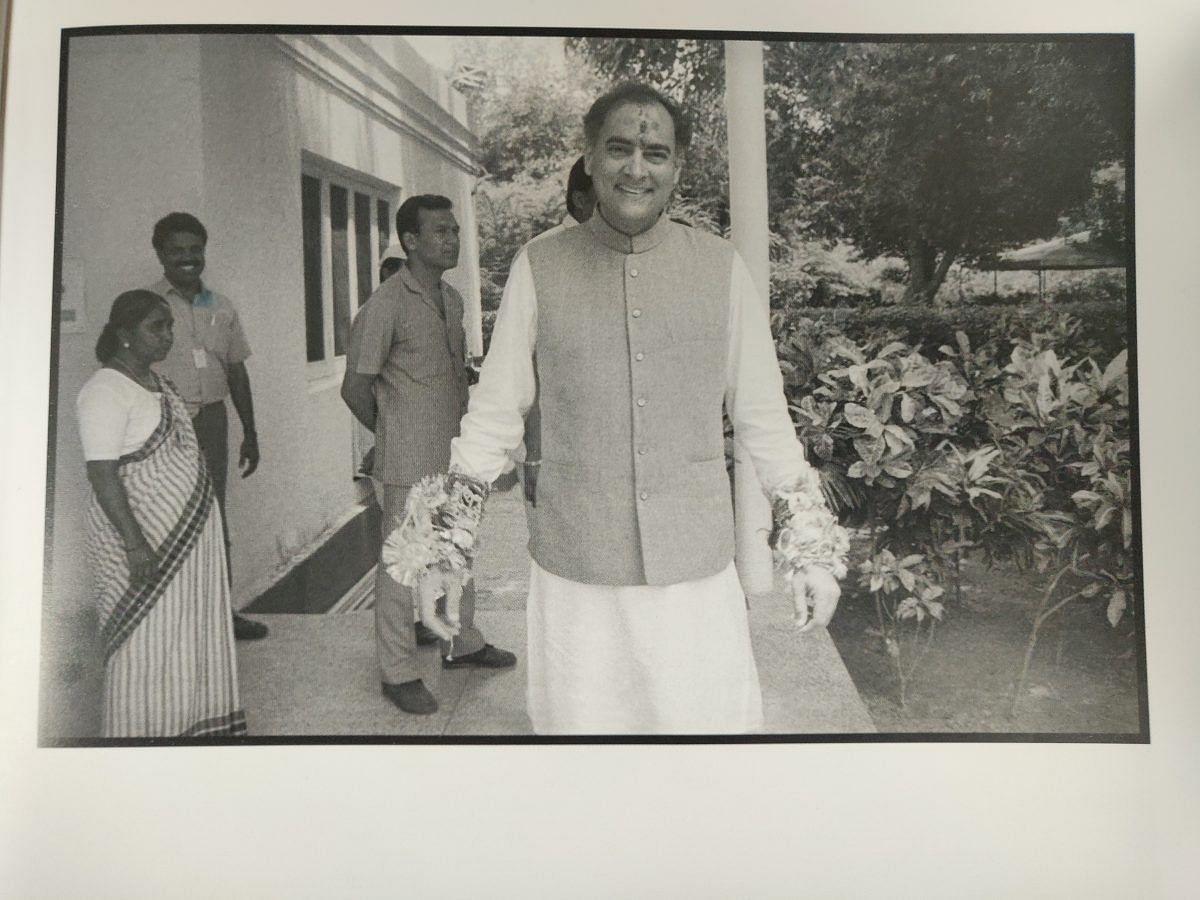
In terms of the best faces to photograph, Jain admits that Manmohan Singh is the most difficult man to crack. “His face doesn’t have an expression,” he said.
“P.V. Narasimha Rao gave few expressions, but they were slow takes.”
“The most expressions I’ve seen till now are from Narendra Modi. If you’re going on an assignment to photograph him, you’re 100 per cent sure of coming back with something good — he’s always up to something.”
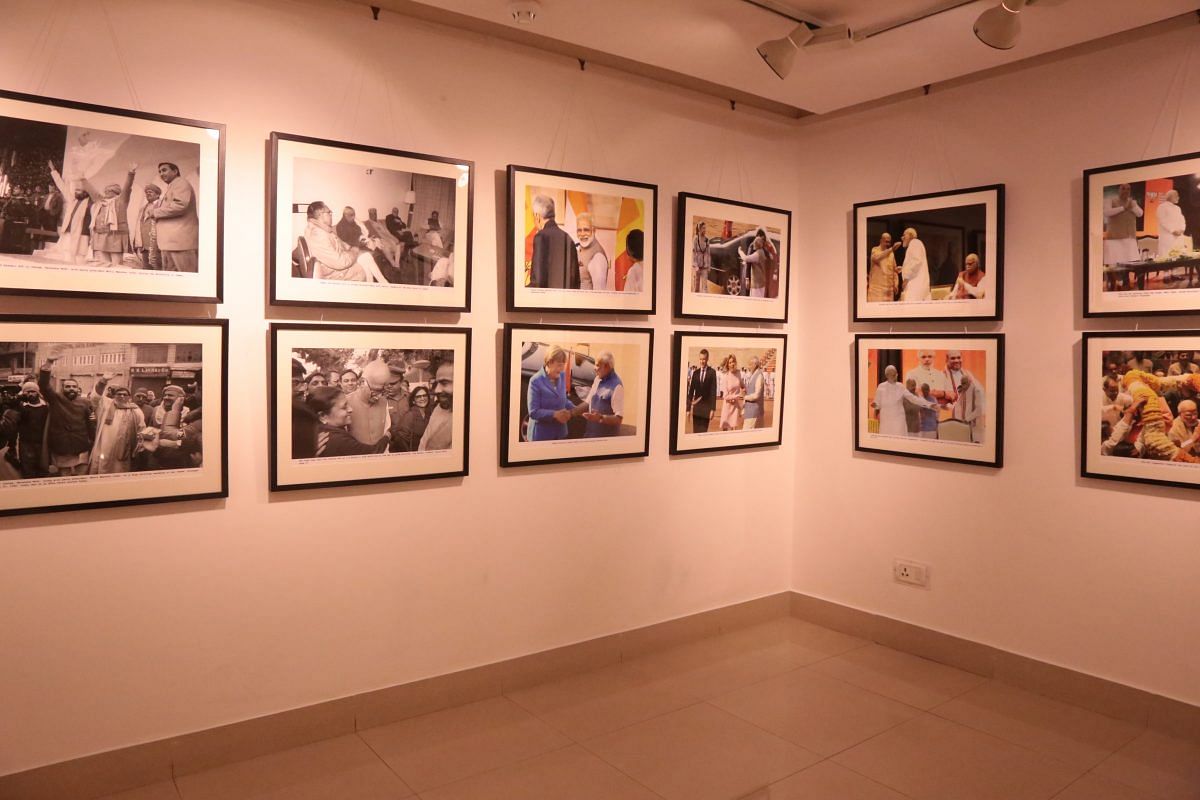
On the rise and rise of Modi
Narendra Modi, however, wasn’t always the centre of Jain’s focus.
Three black-and-white images of Modi from his early political days tell the story of an inconspicuous man on the fringe of fame.
One photograph shows half of Modi’s face, off-centre to the right as the camera focusses on L.K. Advani. The caption reads: “Who knew then that the unknown man at L.K. Advani’s side would end up one day as prime minister. And Advani, himself, would never make it.”
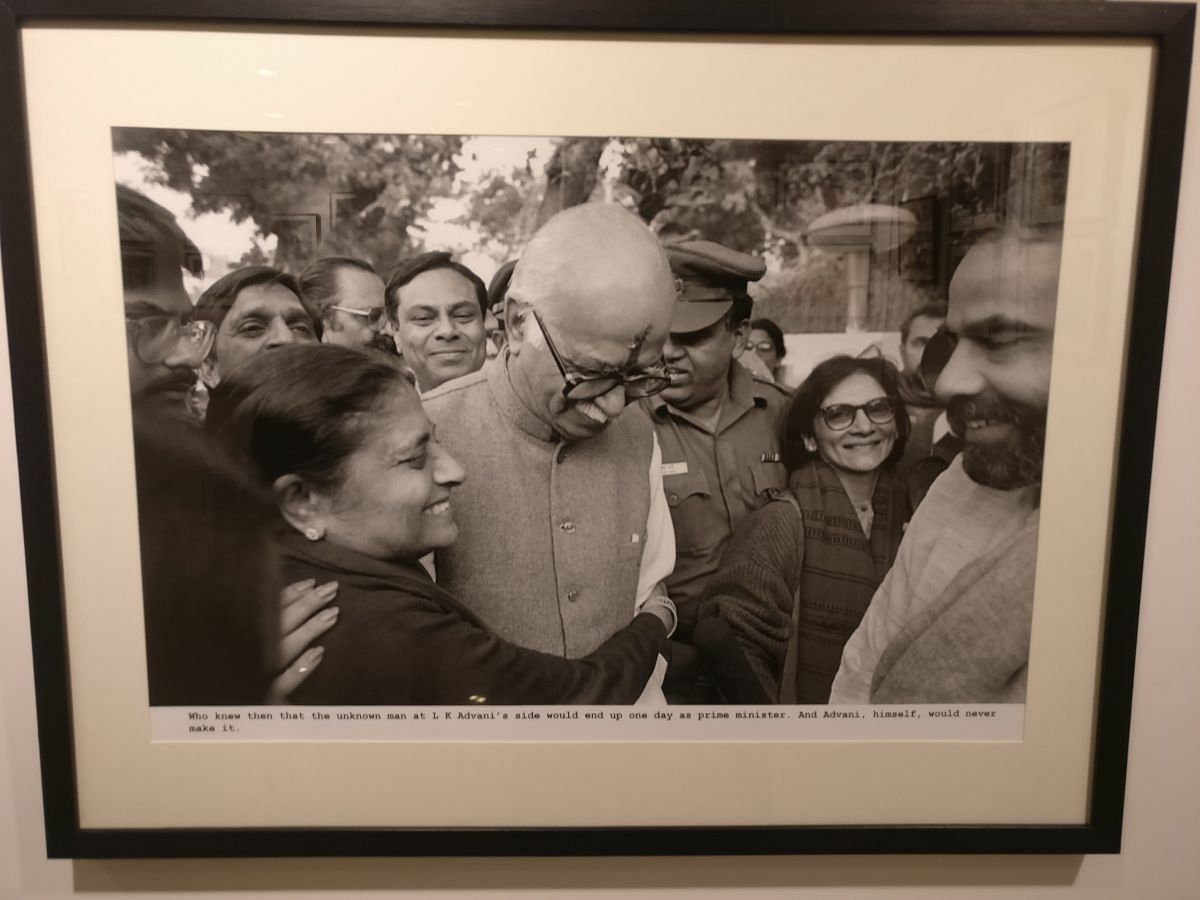
Jain said only half of Modi’s face is visible because “it was cropped”.
“We would actually tell him (Modi), whenever he was with Atal ji or Advani ji, to move to the side,” Jain said.
“If I had known then, I would have taken the full-frame. But he’s just come into the frame by chance.”
On the adjacent wall hangs a photo of BJP president Amit Shah feeding Modi sweets on stage as Advani sits glumly in a corner. In the years since Modi has risen to power, images of Advani standing on the sidelines of important events have routinely gone viral. Jain, however, was the first to capture the shift.
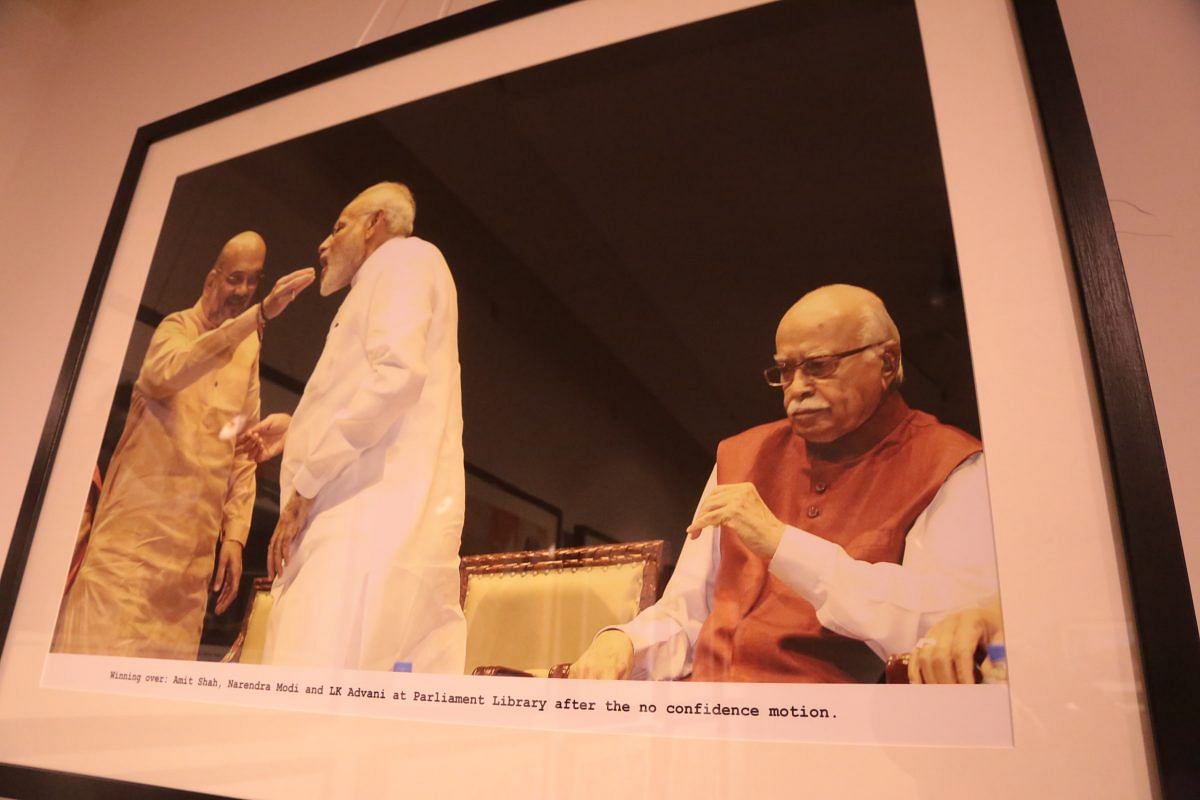
Humanising the bigwigs
Some of Jain’s images leave a lasting impression — not necessarily for the political weight they carry, but for their ability to humanise these figures, who are otherwise put on pedestals or made caricatures of.
“I took this photo to show the conditions in which Lalu Prasad Yadav was living,” Jain said, pointing to an image of Yadav from before he rose to power in Bihar.
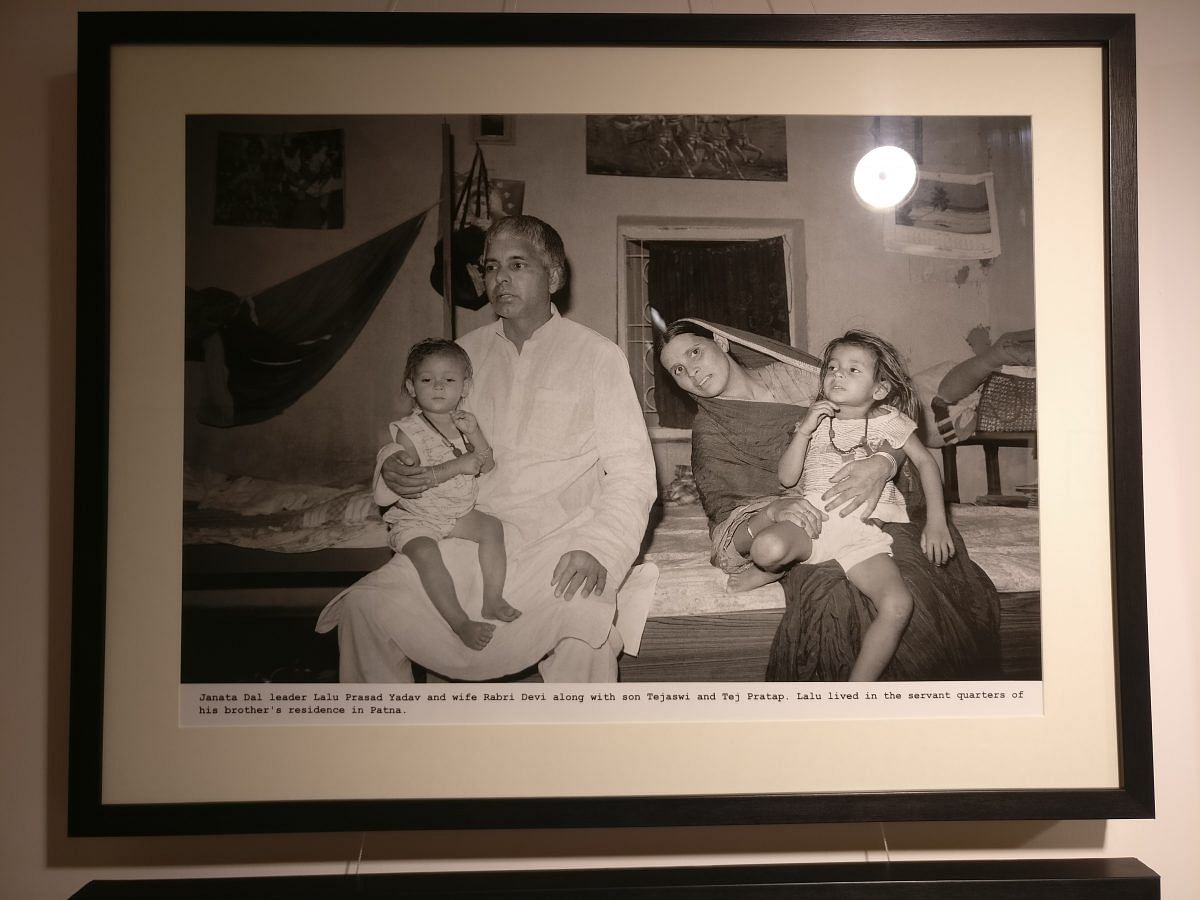
Another image, one Jain is particularly proud of, reveals the collateral damage of political power-plays. It features a desolate Lakshmi Parvathi, widow of N.T. Rama Rao, crying beside his funeral pyre.
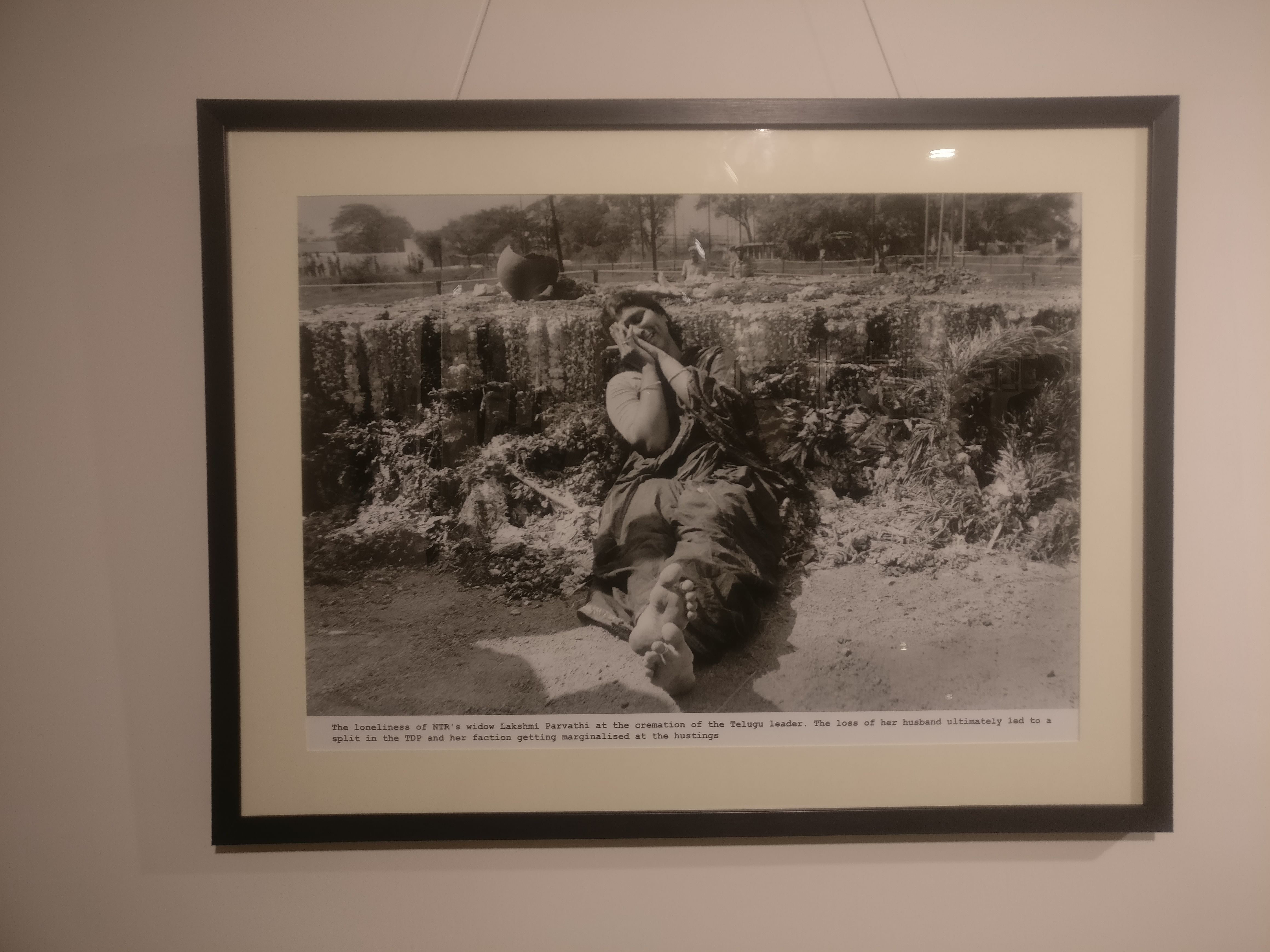
“Chandrababu Naidu kicked her out of the house right after NTR died. She was a powerful woman; she could cause trouble for Naidu. But now all she could do was cry at the cremation ground,” Jain said.
A changed landscape
Jain is currently Associate Editor (Photo) at The Indian Express, where he has worked since 1995. Before that, he worked with Surya India, India Week, Sunday Mail and The Pioneer.
Commenting on the various generational shifts in photography that he has witnessed, Jain said the one virtue the current generation lacks is what helped him in his pursuit of the critical moment — patience.
“Eighty per cent of journalists abandon their assignments right after the first photo-op. All they get is the lighting of the lamp,” Jain said. “Nobody has the patience to wait for a moment anymore.”
Along with a change in temperament, Jain also lamented the loss of respect — technology, he said, has changed not only the way we take photographs, but the value we assign them.
He said he knows many politicians expected to visit his exhibition will not make an appearance, “because someone has already clicked a picture of my photograph on their phone and WhatsApped it to them”.


